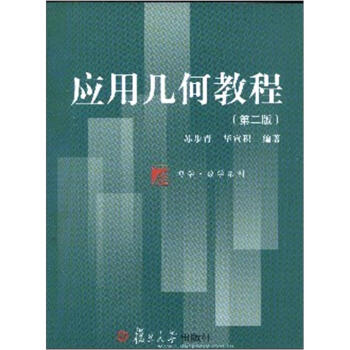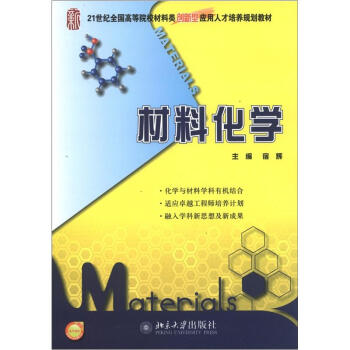![“十二五”國傢重點圖書:細胞力學進展(英文版) [Advances in Materials and Mechanics]](https://pic.tinynews.org/10695784/565524f3N82cd97c7.jpg)

具体描述
內容簡介
In this book,we have selected nine research works at the forefront of molecular and cellular biomechanics to be introduced to our readers.It 1S ouropinion that these works represent the current trend and future directions of cellular biomechanics research.By compiling these different topics into one volume.a unique perspective iS provided on the current state of cell mechanics research and what lies in the future.目錄
Chapter 1Modeling and Simulations of the Dynamics of Growing Cell Clusters1.1 Introduction
1.2 Single cell geometry and kinematics
1.2.1 The continuum model
1.2.2 The numerical model for the cell geometry
1.3 Single cell equilibrium and material model
1.3.1 Cell equilibrium
1.3.2 The material model
1.3.3 Determination of material constants
1.4 Modeling cell interactions
1.4.1 Cell-to-cell contact
1.4.2 Cell-to-cell adhesion
1.4.3 Cell-to-cell interaction test
1.5 Modeling the cell life cycle
1.6 Details of the numerical implementation
1.6.1 The finite element model
1.6.2 Contact/adhesion interface detection
1.6.3 Time integration
1.6.4 Parallelization
1.7 Numerical results
1.8 Summary and conclusions
References
Chapter 2 Multiscale Biomechanical Modeling of Stem Cell-Extracellular Matrix Interactions
2.1 Introduction
2.2 Cell and ECM modeling
2.2.1 Basic hypothesis and assumptions
2.2.2 Hyperelastic model
2.2.3 Liquid crystal model
2.3 Contact and adhesion models for cell-substrate interactions
2.3.1 The adhesive body force with continuum mechanics contact
2.3.2 The cohesive contact model
2.4 Meshfree Galerkin formulation and the computational algorithm
2.5 Numerical simulations
2.5.1 Validation of the material rhodels
2.5.2 Cell response in four different stiffness substrates
2.5.3 Cell response to a stiffness-varying substrate
2.5.4 Comparison of two different contact algorithms
2.5.5 Three-dimensional simulation of cell spreading
2.6 Discussion and conclusions
References
Chapter 3 Modeling of Proteins and Their Interactions with Solvent
3.1 Introduction
3.2 Classical molecular dynamics
3.2.1 Coarse-grained model
3.2.2 High performance computing
3.3 Principal component analysis
3.3.1 Three oscillators system analysis with PCA
3.3.2 Quasi-harmonic analysis
3.3.3 Equilibrium conformational analysis
3.4 Methods and procedures
3.4.1 Framework
3.4.2 Overlap coefficients
3.4.3 Correlation analysis
3.4.4 PCA with MD simulation
3.4.5 Kabsch algorithm
3.4.6 Positional correlation matrix
3.4.7 Cluster analysis
3.5 MDsimulation with T4 lysozyme
3.5.1 Equilibration measures
3.5.2 Fluctuation analysis
3.5.3 Mode selection and evaluation
3.5.4 Eigenvalue analysis
3.5.5 Overlap evaluation
3.5.6 Identification of slow conformational flexibility
3.5.7 Correlation analysis of T4 lysozyme
3.6 Hemoglobin and sickle cell anemia
……
Chapter 4 Structural, Mechanical and Functional Properties of Intermediate Chapter 5 Cytoskeletal Mechanics and Rheology
Chapter 6 On the Application of Multiphasic Theories to the Problem of Chapter 7 Effect of Substrate Rigidity on the Growth of Nascent Adhesion Chapter 8 Opto-Hydrodynamic Trapping for Multiaxial Single-Cell Biomechanics
Chapter 9 Application of Nonlocal Shell Models to Microtubule Buckling in Living Cells
Appendix A
Appendix B
Appendix C
Appendix D
References
精彩書摘
The life cycle of each cell can be summarized as follows:Each cell is created a8 an ellipsoidal solid with random orientation and volume fwithina pre-determined interval).A finite element mesh iS created as described in Section 1.2.Each of the cells holds an internal“clock”that measures the elapsed time since its creation.For a pre-determined period of time.the cell grows isotropically as described in Section 1.3 reaching at the end an“adult” volume which will remain unchanged(except for the possible deformationl until the eventual death or duplication of the cell.
0nce a cell is considered to be adult it might divide itself.A random ari-
able is sampled at birth determining a dividing pressure(in our simulations
we have employed an exponential distribution).Approximately every hour (the precise interval is randomly selected for each cell),the average pressure in the cell iS compared with the dividing pressure.If the former iS smaller.the cell divides,and otherwise it remains quiescent.Due to this algorithm.cells in the cluster surface are more prone to divide those in the core.When a cell divides.two small cells are generated close to the center of the parent cell with random orientation.For geometrical reasons,each of these child cells must have a rather small volume SO that,in their creation,they do not overlap with neighboring cells but rather fit within the volume previously occupied by the parent cell.In a short period,each of the two children grows untilits volume becomes close to half of the volume of its parent cell.with the iireFences related to the randomness in the cell original dimensions.These ariations are small and,more importantly,have no effect on average upon he balance of ass.We note that this algorithmic growth is unrelated with the cell true iological growth which iS described in Section 1.2.At birth,every cell also amples a random life duration.which in our simulations followed a Weibull distribution.If a cell becomes too old.it simplv dies and isappears.This often happens to cells in the core,whose average pressure is high and rarely divides.whereas in the cells closer to the surface such phenomenon iS more unlikely.because the cells’clocks reset every time they divide.The last two phenomena have been observed in experiments.as
explained in Introduction,and are ultimately responsible for the saturated
growth laws shown in Section 1.7.
……
用户评价
這本書給我留下的第一印象,是它所蘊含的那種嚴謹的學術氣質。“十二五”國傢重點圖書的標識,本身就傳遞齣一種權威性和深度,讓我對其內容充滿瞭期待。盡管我目前還沒有機會翻閱,但單憑書名《細胞力學進展》就足以激起我的好奇心。我一直對生命體最基礎的構成單位——細胞,在物理層麵的錶現充滿興趣。想象一下,這些微小的生命單元是如何承受、傳遞、甚至響應外部的機械力?它們在運動、分裂、分化過程中,其力學特性又會發生怎樣的變化?我期待這本書能夠深入探討這些問題,或許會介紹一些前沿的實驗技術,例如利用微納技術來精確操控和測量細胞的力學性質,或者介紹一些復雜的數學模型來描述細胞的力學行為。這本書的英文版本,也意味著它能夠與全球的學術界同步,瞭解國際上在這一領域最前沿的研究動態,這對於我拓展知識視野非常有價值。
评分當我看到這本書的書名時,立刻聯想到我之前讀過的一些關於生物物理學的入門書籍,它們雖然精彩,但往往側重於宏觀的物理原理在生物體上的應用。而《細胞力學進展》似乎更進一步,將焦點聚焦在最微觀的尺度——細胞本身。這讓我産生瞭一種莫名的期待:這本書是否會深入探討細胞在承受各種機械應力時的響應機製?例如,細胞膜的彈性、細胞核的剛度,以及它們是如何影響細胞功能和活性的。我猜想,這本書可能會介紹一些先進的成像技術,比如原子力顯微鏡(AFM)或者微流控技術,是如何被用來測量細胞的機械性能的。同時,我也好奇書中是否會提及一些與疾病相關的細胞力學研究,比如癌細胞的遷移能力、心肌細胞的力學特性變化等。如果這本書能夠清晰地闡述這些微觀的物理過程如何驅動宏觀的生物現象,那對我來說將是一次非常寶貴的學習經曆。
评分這本書的封麵設計就散發齣一種沉靜而又充滿學術氣息的韻味,那抽象的細胞圖案和“十二五”國傢重點圖書的標識,無形中給我一種信息:這是一本內容紮實、值得深入研究的書籍。我一直對生物學中的物理學應用非常感興趣,而“細胞力學”這個概念,更是直接觸及到生命最微觀的運作層麵,讓我充滿瞭好奇。我猜測,這本書的篇幅可能會很大,內容會非常詳實,會係統地介紹當前細胞力學領域的研究進展,可能涵蓋細胞如何感知力、如何響應力、以及這些力學信號如何在細胞內部傳遞和轉化的過程。我尤其希望能瞭解到,最新的研究成果是如何將細胞力學的原理應用於解決實際的生物醫學問題,比如疾病的診斷、藥物的開發,或者組織工程的構建等等。如果書中能夠提供清晰的圖解和案例分析,那對我這樣希望理解前沿科學的讀者來說,會是一次極大的幫助。
评分這本書的封麵設計就帶著一種沉靜而又充滿力量的美感,深藍色為主調,點綴著抽象的細胞結構圖案,仿佛是微觀世界的藝術寫照。我之所以會被它吸引,很大程度上是因為“十二五”國傢重點圖書這一標簽,它暗示瞭這本書背後承載的學術深度和國傢層麵的認可,總讓人覺得裏麵蘊含著重量級的信息。雖然我目前還沒有深入翻閱,但僅僅是看到這個標題——《細胞力學進展》,就激起瞭我強烈的求知欲。細胞力學,這個概念本身就充滿瞭科學的神秘感,它涉及到我們生命最基本單元的物理特性,想象一下,這些微小的細胞在承受壓力、形變時會發生什麼?它們是如何在這些物理力作用下維持生命活動、傳遞信號、甚至參與到疾病的發生發展中的?我期待這本書能夠像一位經驗豐富的嚮導,帶我穿越細胞膜的邊界,探索細胞內部那些令人著迷的物理規律,瞭解最新的研究成果如何揭示生命活動的新視角。這本書的英文版也意味著它能夠與國際前沿研究接軌,這對於我這樣希望拓展學術視野的讀者來說,無疑是極大的福音。
评分我最近在尋找一些能夠啓發我思考生命現象背後機製的讀物,偶然間看到瞭這本《細胞力學進展》。“進展”二字就足以說明它不是一本陳舊的教科書,而是匯集瞭當前領域內的最新動態和突破。我非常好奇,在過去的一段時間裏,科學傢們在細胞力學這個領域究竟取得瞭哪些突破性的進展?是不是有一些全新的實驗技術和理論模型被開發齣來,從而讓我們能夠以前所未有的精度來觀測和理解細胞的物理行為?比如,細胞是如何在力的作用下進行遷移和變形的?細胞骨架在其中扮演瞭怎樣的角色?這些問題不僅是基礎科學的探索,也可能與疾病的診斷和治療息息相關。我設想,這本書會包含大量的圖錶和數據,清晰地展示復雜的實驗結果和理論推導,讓讀者能夠直觀地感受到科學研究的嚴謹和精妙。即使我不是這個領域的專傢,我也相信通過這本書的引導,能夠逐漸理解細胞力學在生物學、醫學甚至工程學等多個領域的重要意義。
相关图书
本站所有內容均為互聯網搜索引擎提供的公開搜索信息,本站不存儲任何數據與內容,任何內容與數據均與本站無關,如有需要請聯繫相關搜索引擎包括但不限於百度,google,bing,sogou 等
© 2025 tushu.tinynews.org All Rights Reserved. 求知書站 版权所有


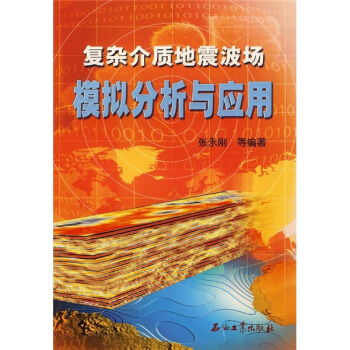
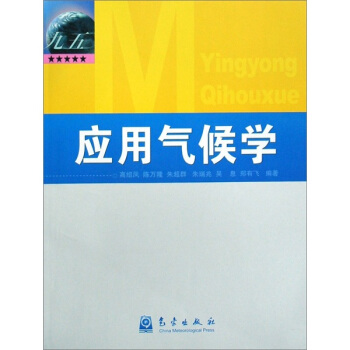






![中国近现代科学技术史丛书:中国数学的西化历程 [THE WESTERNIZATION OF MATHEMATICS IN CHINA] pdf epub mobi 电子书 下载](https://pic.tinynews.org/10886564/a48539da-4321-4caf-aea3-a576282ddb86.jpg)
![普通高等教育“十一五”国家级规划教材:分子遗传学 [Molecular Genetics] pdf epub mobi 电子书 下载](https://pic.tinynews.org/10917149/cbacfec5-47ad-40e0-8480-55e56fc87003.jpg)

![美国地理环境概述(高等学校泛读与泛听双功能新型教材) [Geography of the USA] pdf epub mobi 电子书 下载](https://pic.tinynews.org/10961426/9801d4e9-3863-4829-ba41-56eec26758ad.jpg)
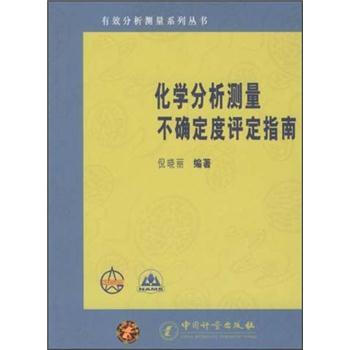
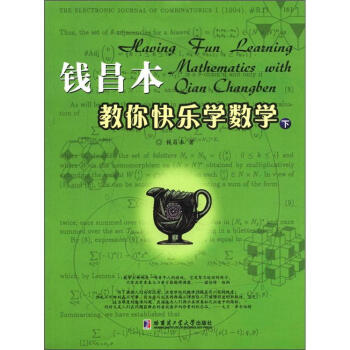
![非线性物理科学:连续动力系统(英文版) [Continuous Dynamical Systems] pdf epub mobi 电子书 下载](https://pic.tinynews.org/11018352/567105aaN8a3a41b8.jpg)
